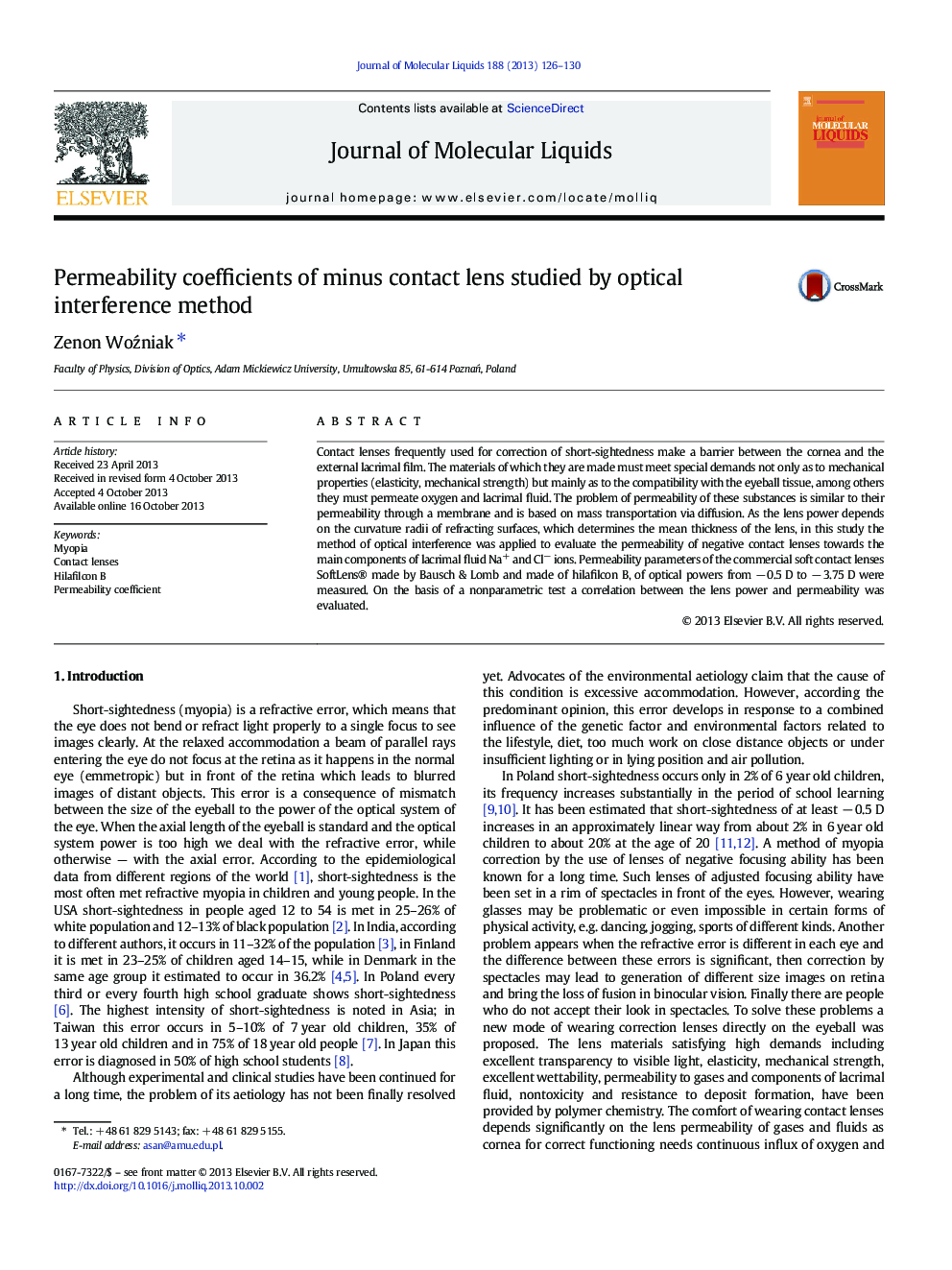| Article ID | Journal | Published Year | Pages | File Type |
|---|---|---|---|---|
| 5411761 | Journal of Molecular Liquids | 2013 | 5 Pages |
Abstract
Contact lenses frequently used for correction of short-sightedness make a barrier between the cornea and the external lacrimal film. The materials of which they are made must meet special demands not only as to mechanical properties (elasticity, mechanical strength) but mainly as to the compatibility with the eyeball tissue, among others they must permeate oxygen and lacrimal fluid. The problem of permeability of these substances is similar to their permeability through a membrane and is based on mass transportation via diffusion. As the lens power depends on the curvature radii of refracting surfaces, which determines the mean thickness of the lens, in this study the method of optical interference was applied to evaluate the permeability of negative contact lenses towards the main components of lacrimal fluid Na+ and Clâ ions. Permeability parameters of the commercial soft contact lenses SoftLens® made by Bausch & Lomb and made of hilafilcon B, of optical powers from â 0.5 D to â 3.75 D were measured. On the basis of a nonparametric test a correlation between the lens power and permeability was evaluated.
Related Topics
Physical Sciences and Engineering
Chemistry
Physical and Theoretical Chemistry
Authors
Zenon Woźniak,
